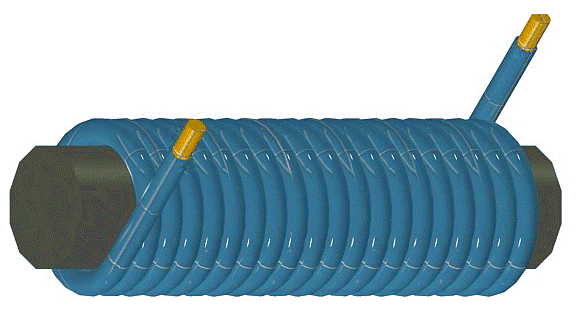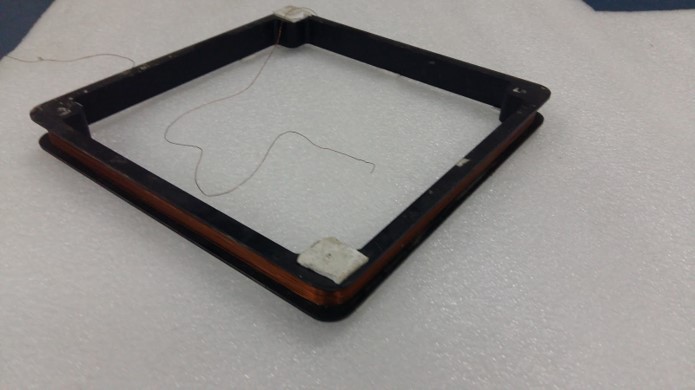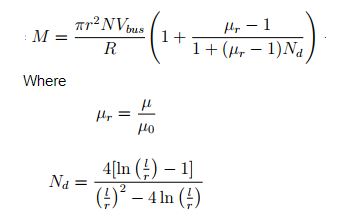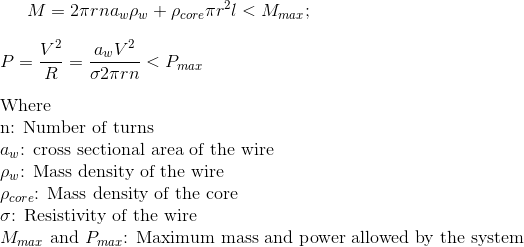Magnetorquers
The magnetorquer is a widely used actuator for small satellites.
Contents
Physics of Magnetorquers
The basic laws of electromagnetism state that current carrying loop acquires magnetic dipole moment. Magnetic moment for current carrying loop is given by
This is a vector quantity directed along the area vector of the loop. Here A is the area of loop and N is number of wire turns. The direction of area vector is such that if fingers of right hand are curled in the direction of current, thumb points towards area vector. In the presence of uniform external magnetic field, the loop experiences a torque:
Magnetic torquer is a current carrying insulated loop which can be mounted on satellite body. The outer space has magnetic field due to the earth. In presence of this field, torquer can exert torque on the satellite when current is passed through it. Since magnetic field doesn’t vary over the length scale of dimension of torquer, it can be assumed to be uniform and above formula is applicable.
Modeling of Torquer

The actuator is a part of control system which implements the control law on our plant. In case of satellite, the required control torque is determined by control law. This torque is generated by passing the electric current determined by the above equation, through torquer. But it should be noted that microcontroller can provide voltage signal. Thus it is necessary to study the relation between voltage applied to torquer and current generated in it.
The torquer coil has some specific resistance R. Since it forms a loop it will also have inductance L. Thus torquer can be modelled as series L-R circuit.
The electric current response to the applied voltage is specified by transfer function:
Effect of the ferromagnetic core

The magnetorquers in shape of coil take too much space and have larger mass. In order to generate larger moment with stringent mass and size constraints, ferromagnetic core torquers can be used.
These are called torque rods. It is a solenoid of length ‘l’ and radius ‘r’ with ferromagnetic core of relative permeability ‘µ_r’. The magnetic moment for cored solenoid in steady state is given by: [1]
It can be easily seen that moment is scaled up by constant greater than 1 which depends on geometry and material properties of ferromagnetic core. This is because of generation of magnetization (magnetic moment per unit volume) in the core due free current. This extra moment adds up with original magnetic moment of bare solenoid.
If ferromagnetic core is used, following points should be taken into account:
- The voltage should be applied such that ferromagnet operates in linear region. Thus the moment generated is proportional to input.
- If core goes to saturation region then when there is no current, it will still possess residual magnetization due to hysteresis. This magnetization should be removed by applying extra reverse current.
Design Parameters
Magnetorquers can be mounted on surfaces of the satellite body. If three magnetorquers are mounted on three orthogonal surfaces then they can be used for three-axis stabilization of satellite.
Considering the structural and material aspects of the actuator, following factors affect its performance:
- Material of the coil: Wires can be made from either copper or aluminum. Aluminum wires are lighter in weight whereas copper wires have lower resistance.
- Material of the core: It could be either air core or ferromagnetic core. High permeability is favourable. The material should have large linear region.
- Length, cross sectional area of coil and rod should be chosen such that they obey following power and mass constraints:
- Time constant: Time constant of torquer (L/R) should be short so that steady state is achieved quickly.
Advantages over other actuators
- Less bulky compared to reaction wheels, control moment gyros.
- Consumes less power than reaction wheels. Unlike reaction wheels, no extra actuator is required.
- It can exert external torques on the satellite body.
- In low earth orbit, magnetic field strength is enough to generate necessary control torques.
If you are done reading this page, you can go back to Attitude Determination and Control Subsystem



